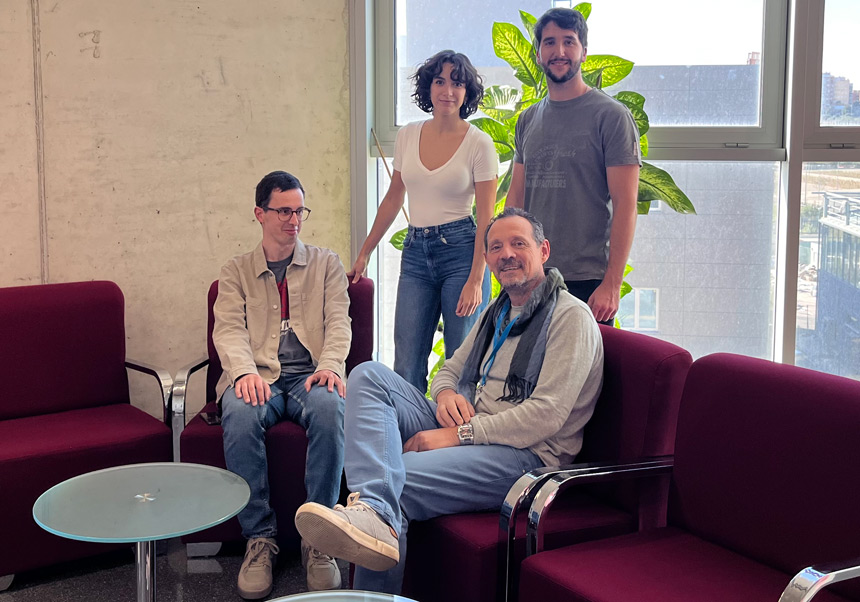Users
Social media
- More details here...
- Address
Parc Científic de la Universitat de València C/
Catedrático Agustín Escardino, 9
46980 Paterna (Valencia) Spain - Email:
iu.i2sysbio@uv.es - Phone:
(+34) 963544810
- Address
Links
They describe the mechanisms of plants to fight viroids, the smallest known infectious agents.

Investigation
They describe the mechanisms of plants to fight viroids, the smallest known infectious agents.

The Institute of Integrative Systems Biology (UV-CSIC) obtains the first temporal map of the alterations associated with viroid infection suffered by a plant at the genomic level. The results are useful for finding infection resistance mechanisms that could be selected in varieties of agricultural interest.
A research group from the Institute of Integrative Systems Biology (i2SysBio), a joint center of the Higher Council for Scientific Research (CSIC) and the University of Valencia (UV), has obtained the first temporal map of the alterations suffered by a plant as a result of a viroid infection, the smallest infectious agents. that they know each other. These alterations include malformations and discoloration of the different parts of the infected plant, which can cause significant losses in crops. The study, published in the journalPlant, Cell & Environment, will help determine the bases of the molecular response of plants to viroid infection, something very useful for selecting resistance mechanisms in agricultural varieties.
Specifically, the work led by Gustavo Gómez, CSIC scientist at i2SysBio, has studied the infection of the cucumber plant (Cucumis sativus) by the hop dwarf viroid. This can infect a wide range of species, from horticultural to fruit trees, causing symptoms such as dwarfism, spots and irregularities on the fruits and grooves on the trunks.
To characterize the molecular response of cucumber plants during infection, the researchers used massive sequencing techniques to determine which genes are activated (gene expression), in addition to the accumulation of non-coding RNAs (the material from which viroids are made) and epigenetic changes (modifications in DNA which, although they do not change the sequence of the genes, they generate marks that influence their level of expression).
“This project has made it possible to characterize in an integrative way the response to viroid infection at different stages of the same,” explains Gustavo Gómez, CSIC researcher and coordinator of the work. In the early stage of the infection, in which the viroid reaches a non-inoculated plant tissue, they observed an increase in the expression of some genes, as well as changes in the identity of the transcribed genes, the process of generating a copy of RNA from a DNA sequence of a gene.
Select mechanisms of resistance to infection
“On the other hand, in the intermediate and late stages of the infection, repression of gene expression predominated,” he describes. Gomez. This repression of gene expression was associated with epigenetic changes in DNA, a process that modifies its function. Regarding small non-coding RNAs, alterations were limited and occurred predominantly at the end of infection. "This is the first temporal map of the alterations associated with viroid infection considering epigenetic changes and in the expression of coding genes and small non-coding RNAs," says the CSIC researcher.
According to Gustavo Gómez, "this work will serve to help elucidate the bases of the molecular response of plants to viroid infection. This could be very useful to find mechanisms of resistance to infection that could be selected in varieties of interest. agricultural”.
Reference:
Márquez-Molins, J., Villalba-Bermell, P., Corell-Sierra, J., Pallás, V. & Gomez, G. Integrative time-scale and multi-omics analysis of host responses to viroid infection. Plant, Cell & Environment, 46, 2909–2927. https://doi.org/10.1111/pce.14647
Source: CSIC, Delegation in the Valencian Community.


